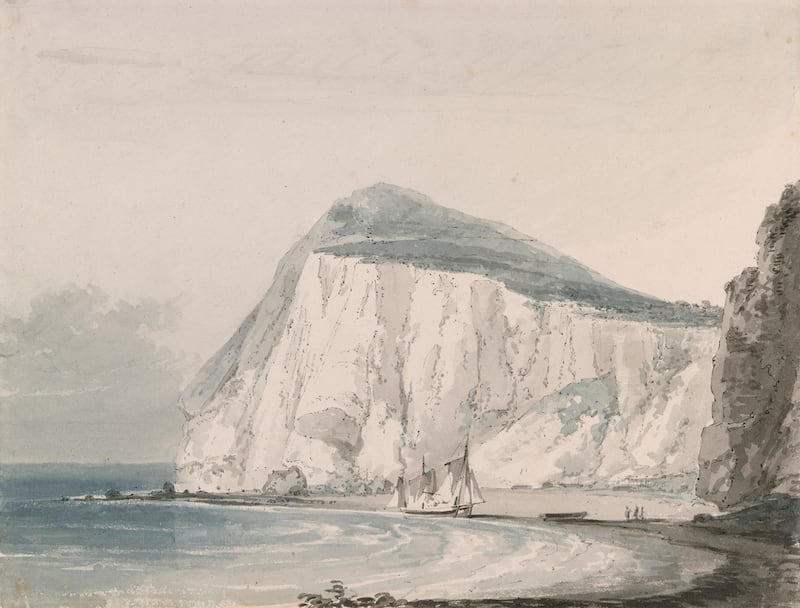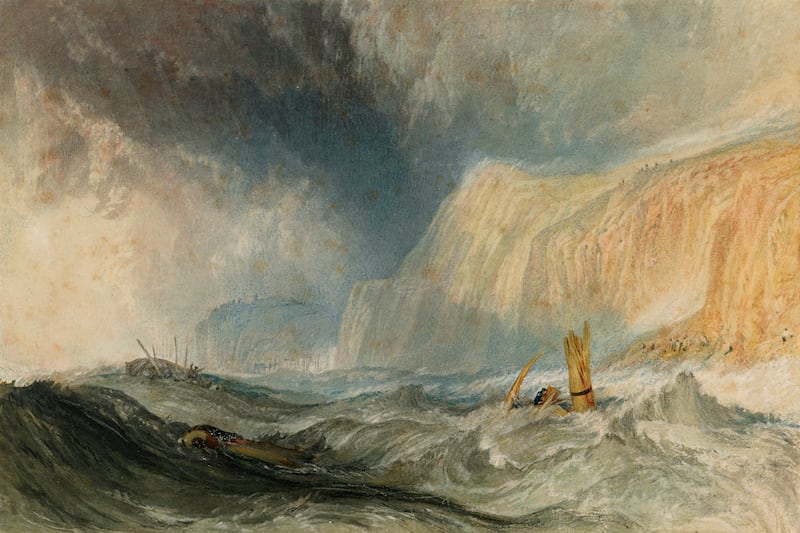Under the terms of the Vaughan bequest, the Turner watercolours at the National Gallery of Ireland spend most of the year under wraps. Because of the fragility of the works, Henry Vaughan stipulated that the paintings only go on view in January, when natural light is most limited. As is customary, they emerge this year blinking into the serene glow of the Print Gallery, where the light is carefully calibrated to be kind. So kind that they could easily tolerate longer exposure but the bequest is still honoured. And, whatever adjustments have been made behind the scenes, this year they look better than ever.
The regularity of their reappearance and the time limit on their availability present an interesting question. Should you make the effort of going to see them, the real things, close-up, when you could consult printed reproductions (a handsome and comprehensive new catalogue has just been published) or check them out in the virtual, digital world, in your own time? Walter Benjamin famously proposed that, rather than undermining the real, mechanical reproduction would enhance the aura of the original. That was a long time before contemporary visual enhancements of digital technology, and the ubiquity of screens, but the principle seems to hold, sort of.
To encounter the watercolours in the gallery is a different experience from any online encounter, and that includes any prospective virtual reality encounter or anything envisaged in Meta’s ambitions. What screens tend to do is reduce, or perhaps condense, a work of art to a surface, to an image, when it is always more than an image, more than a surface. It is notable, though, that the pressure of screen dominance is having a reductive effect on art being made now, simplifying substance, import and presence. Increasingly, the simple, relatable image rules. A visit to the Turner watercolours is a crash-course in what might be lost.
Not that Turner was opposed or indifferent to mechanical reproduction. Far from it. A businessman, he was keen on ways of expanding the market for his work, and tailoring the work to the market. The show includes pieces from his Liber Studiorum project, which involved his collaboration with specialist engravers to produce some 71 prints (the NGI holds a complete set, courtesy of a generous donor). He aimed for 100 works but demand was sluggish and he gave up.
READ MORE
This year’s Turner watercolour show coincides with the arrival of a new director, Dr Caroline Campbell, at an important moment in the gallery’s development. Her predecessor, Sean Rainbird, was 10 years in the job. An enormously capable and forward-looking director, a great deal of his energies went into guiding the gallery through two big disruptions. One was the big refurbishment, expansion and revamping of the buildings and services, the other was Covid, which slammed on the brakes just as things should have been picking up speed. Perhaps because the gallery is uniquely prestigious in Ireland’s cultural landscape, and hence the focus of many different interest groups, its governance has often proved tricky, with some highs and lows. The director has to manage those many associated interests and the attitudes of the wider public.

Dr Campbell, the gallery’s first woman director, has a stellar track record, having held positions at the National Gallery London, the Courtauld and the Ashmolean. She has, she says, held a particular affection for the National Gallery of Ireland. As a teenager during the Troubles in Northern Ireland she visited and was entranced by this vision of another world. With a thorough art historical grounding and an interest in art of all eras, she seems ideally equipped to lead the gallery as it faces contemporary challenges, including questions of cultural diversity, fair representation and what outgoing Guggenheim director Richard Armstrong terms the parallel, digital universe. Dr Campbell’s experience includes a curatorial leadership fellowship in New York (and next year sees the publication of her book, Power, People, Painting, tracing art history through pivotal times in 15 cities).
It is no exaggeration to say that the Vaughan bequest watercolours make up a compact retrospective of Turner’s lifelong explorations as a painter, from his stunning, exact study of beech trees at Norbury Park in Surrey to his remarkably atmospheric, minimally stated account of rain moving across a body of water. Such minimal paintings generated some pushback: the gallery’s concurrent exhibition, Turner: The Sun is God, comprising nearly 90 pieces from the incomparable Tate collection, includes at least one oil rejected by its commissioner. One can easily imagine something similar happening today. In Turner’s time William Hazlitt described his work well, though disapprovingly, as “pictures of the elements, air, earth and water ... the first chaos of the world”, evoking not so much nature as the medium through which it is seen. Hazlitt cited an unspecified other as summing the paintings up as “pictures of nothing, and like”.


There is an unfortunate tendency to see art in terms of a linear, historical narrative, so that Turner anticipates or lays the ground for subsequent artistic developments, for example. One problem with this view is that it devalues the work in itself. Just take the paintings on their own terms, not as elements in some sequential story of artistic “progress” or part of any single historical trajectory, and they are all the more extraordinary. Intrinsic to this view is that they are physical, vulnerable objects, not momentary arrangements of pixels to be glanced at and discarded. Take the time to go see the real thing.
Turner: The Sun is God, Beit Wing, National Gallery of Ireland, Merrion Square West/Clare St, until February 6th (Admission charges apply, with concessions, see nationalgallery.ie)
Turner: The Henry Vaughan Bequest, Print Gallery, National Gallery of Ireland, Merrion Square West/Clare St, until January 31st (Admission free)


















